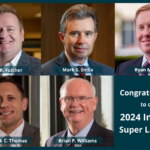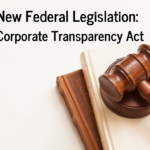On September 11, 2020, the U.S. Department of Labor (“DOL”) issued revisions and clarifications to the Families First Coronavirus Response Act’s (“FFCRA”) paid leave regulations in response to a recent ruling by the United States District Court for the Southern District of New York (“District Court”) that found certain provisions of these regulations invalid.
The FFCRA consists of paid sick leave and expanded family and medical leave as detailed in this blog: Families First Coronavirus Response Act.
The revisions and clarifications to the FFCRA’s paid leave regulations will take effect on September 16, 2020. Currently, the FFCRA is scheduled to expire on December 31, 2020.
1) DOL revises the definition of “health care provider.”
The DOL revised its definition of employees who are “health care providers” and exempt from the FFCRA paid leave requirements.
First, a “health care provider” includes anyone who is a licensed doctor of medicine, nurse practitioner, or other health care provider permitted to issue a certification for purposes of the FMLA.
Second, a “health care provider” includes any person who is employed to provide diagnostic services, preventive services, treatment services, or other services that are integrated with and necessary to the provision of patient care and, if not provided, would adversely impact patient care. This includes nurses, nurse assistants, and medical technicians. This also includes employees who directly assist or are supervised by a direct provider of diagnostic, preventive, treatment, or other patient care services. Employees who do not provide direct heath care services to a patient but are otherwise integrated into and necessary to the provision those services—for example, a laboratory technician who processes medical test results to aid in the diagnosis and treatment of a health condition—are health care providers.
A person is not a health care provider merely because his or her employer provides health care services or because he or she provides a service that affects the provision of health care services. For example, IT professionals, building maintenance staff, human resources personnel, cooks, food services workers, records managers, consultants, and billers are not health care providers.
2) DOL revises employee notice and documentation requirements.
The revisions require that employees provide notice of the need for FFCRA leave as soon as practicable. If the need for leave is foreseeable, that generally means providing notice before taking leave.
The DOL also clarified that employees do not need to provide supporting documentation “prior to” taking FFCRA leave but may provide the documentation to employers as soon as practicable, which in most cases will be when the employee provides notice of their need for leave.
The regulations now require employees to submit the following information in writing to their employer as soon as practicable:
- The employee’s name;
- The dates for which leave is requested;
- The qualifying reason for paid sick leave or expanded family and medical leave; and
- An oral or written statement that the employee is unable to work.
Employees must also submit additional information as detailed in this blog: IRS Guidance for Employers on Documentation Requirements for Paid Leave.
3) DOL reaffirms that leave may be taken only if the employee has work from which to take leave.
An employee is entitled to FFCRA leave only if a qualifying reason is a but-for cause of the employee’s inability to work. The DOL explained that if there is no work for an employee to perform due to circumstances other than a qualifying reason for leave (perhaps the employer closed the worksite temporarily or permanently), a qualifying reason could not be a but-for cause of the employee’s inability to work. Instead, the employee would have no work from which to take leave.
This work-availability requirement was explicitly in the original text of the FFCRA’s regulations as to three of the six qualifying reasons for paid sick leave: reasons 1 (employee is subject to a quarantine or isolation order), 4 (employee is caring for an individual subject or advised to quarantine or isolation) or 5 (employee is caring for son or daughter).
In response to the District Court’s ruling, the DOL reaffirmed a but-for causation standard, and now makes clear the standard applies to all qualifying reasons including reasons 2 (employee advised by health care provider to self-quarantine) and 3 (employee is experiencing symptoms of COVID-19 and is seeking a medical diagnosis).
4) DOL reaffirms that an employee must obtain the employer’s approval to take leave intermittently.
The FFCRA’s regulations permit an employee who is reporting to a worksite to take paid sick leave or expanded family and medical leave on an intermittent basis only when taking leave to care for a son or daughter whose school, place of care or child care provider is closed or unavailable due to COVID-19 and only with the employer’s consent. An employee who is teleworking (not reporting to the worksite) may take intermittent leave for any of the qualifying reasons for paid sick leave or expanded family and medical leave as long as the employer consents.
In response to the District Court’s ruling, the DOL reaffirmed its position that employer approval is needed to take intermittent paid sick leave or expanded family and medical leave.
Please contact your KDDK attorney or any member of the KDDK labor and employment law team for additional information and individualized guidance on this or any related topic.




